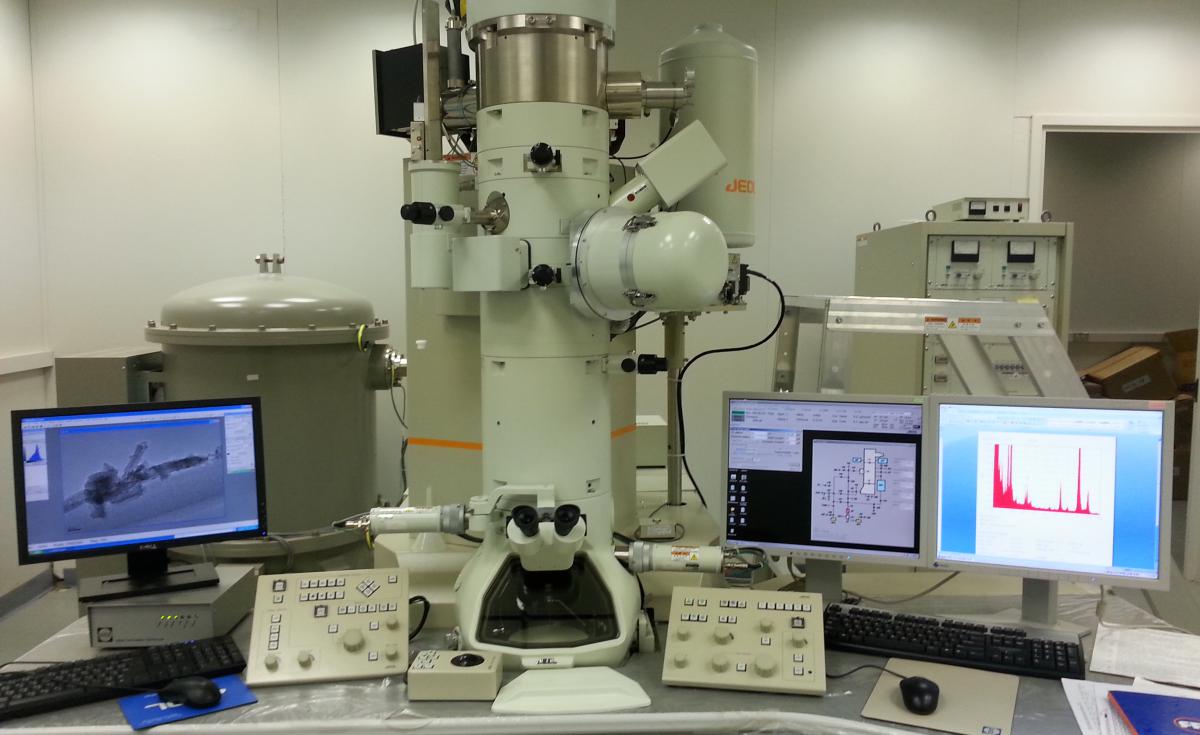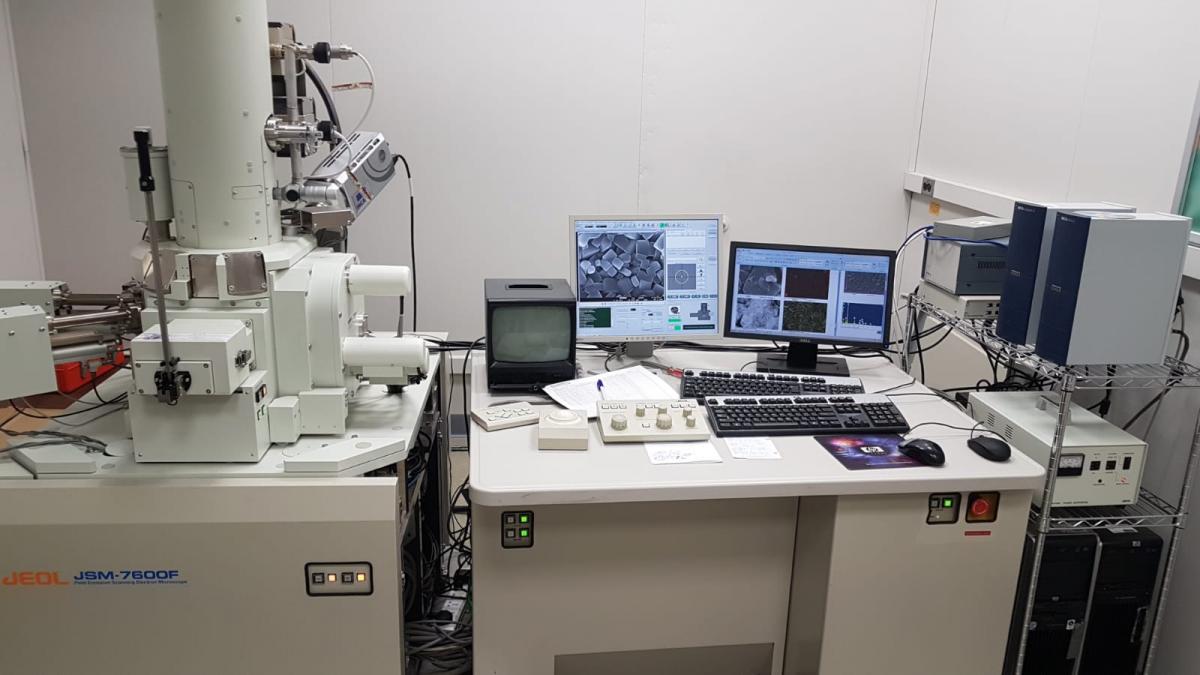Material Characterization Lab
Material Characterization Lab Electron Microscopy Techniques use an electron beam to image a sample and to identify; nm sized defects, crystallographic phases, nanoparticle characterization, ultra small area elemental maps and lattice characterization etc.

SEM-EBSD technique is applied for:
- Crystal orientation analysis.
- Texture analysis, including pole figure plots, inverse pole figure plots, orientation color coded maps, Euler space, Rodriguez space
- Grain size distribution and analysis
- Misorientation angle distribution and analysis.
- Phase ID and multi-phase differentiation and mapping of all crystal phases
- Advanced texture analysis (ODF, MDF) C- coefficients
- Grain boundary analysis, Grain boundary mapping
X-ray diffraction technique can provide the basic information on the materials related phase, crystalinity, size etc. This data is plotted as intensity vs. angle to give a series of peaks (diffraction pattern). Each chemical compound or phase gives a different diffraction pattern. A mixture of compounds gives a pattern that is made up of the patterns of all the individual compounds. The compounds present in a mixture are then identified by comparing the obtained diffraction pattern to a large database of patterns.

